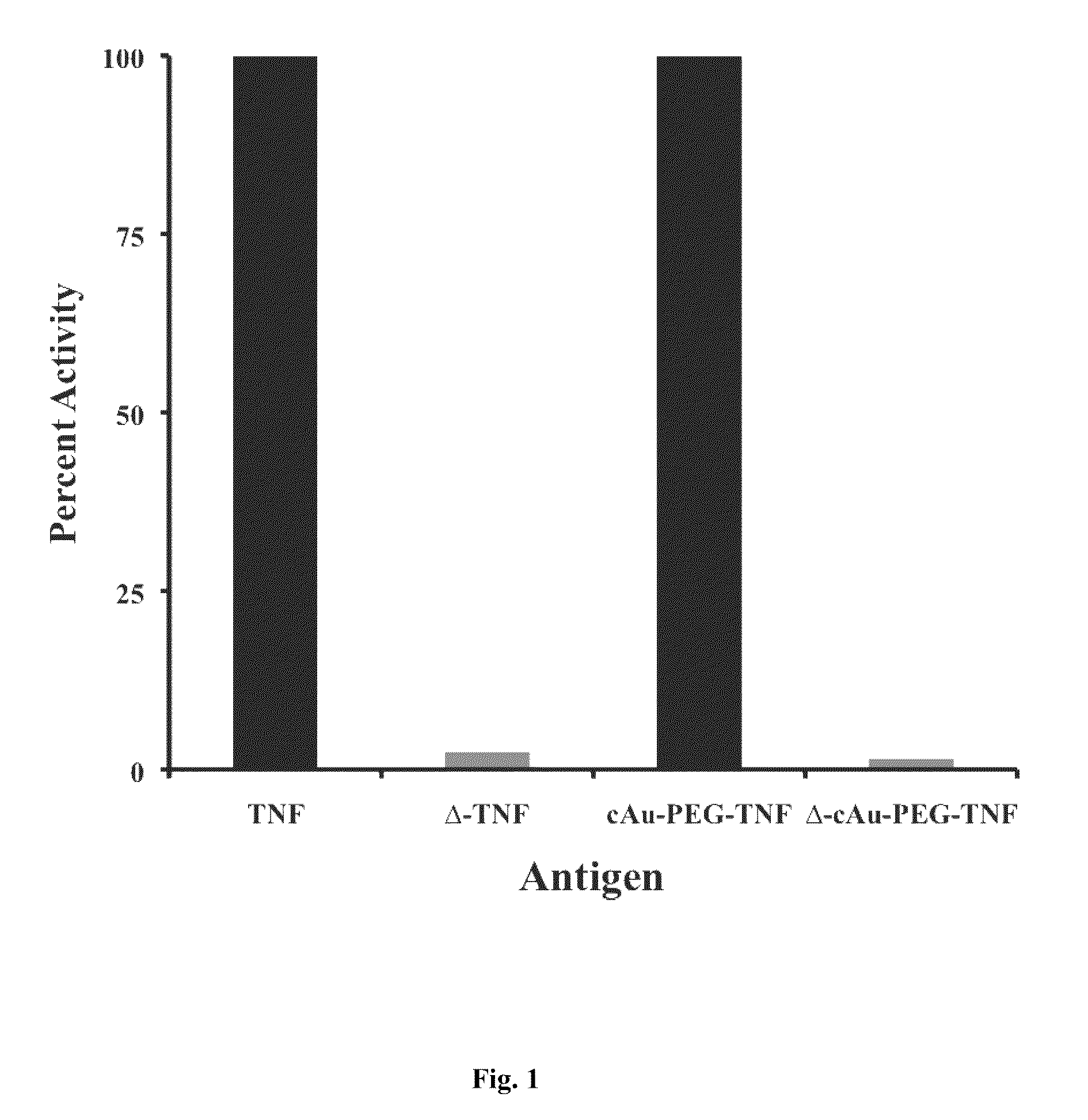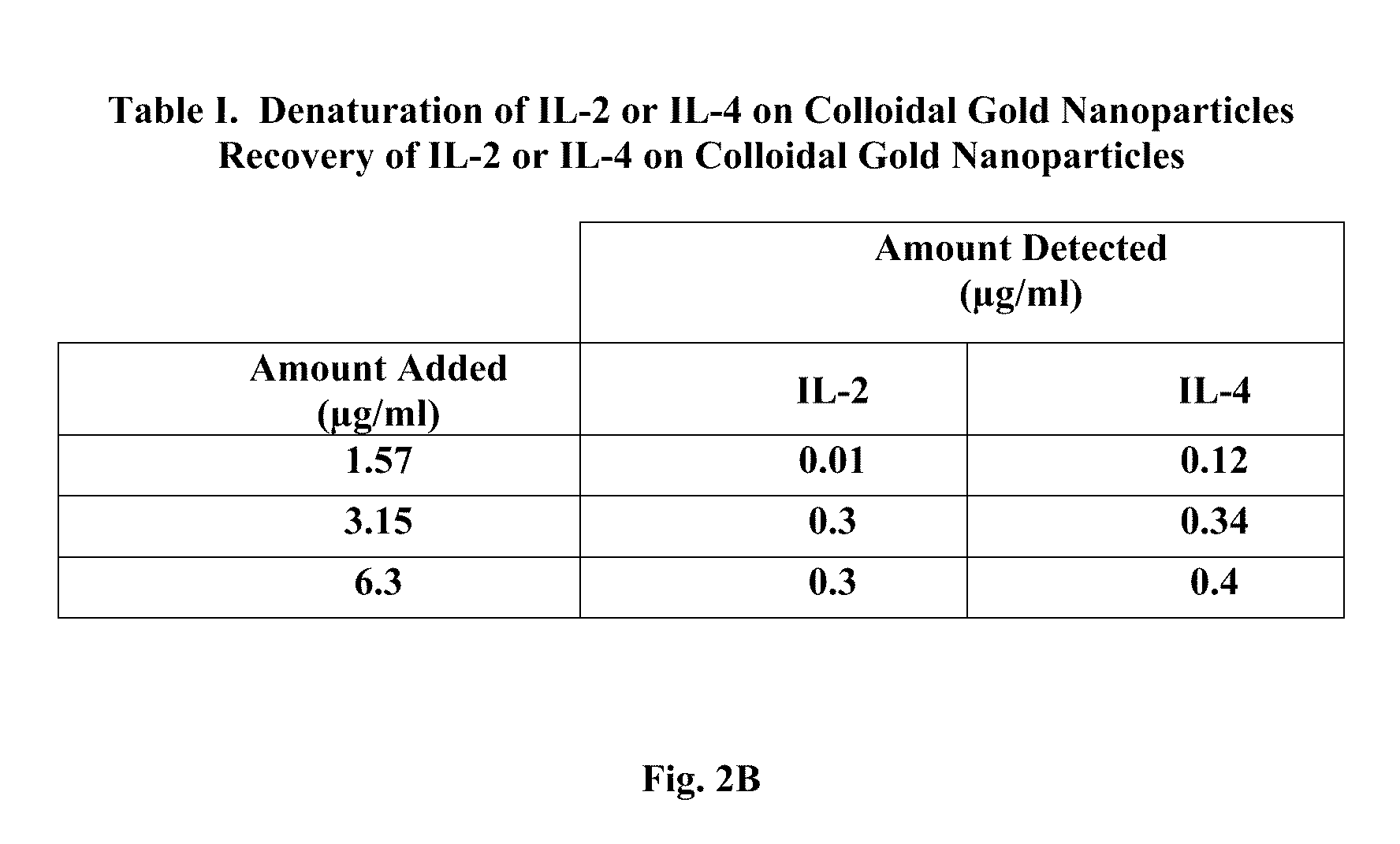Compositions and methods for generating antibodies
a composition and antibody technology, applied in the field of new antibodies, can solve the problems of lack of antigen specific b cells, inability to obtain human lymph nodes or spleens, and difficulty in extrapolating from animal to man, and achieve the effects of reducing increasing the uptake of cau-egf complex, and improving the immunologic detection and biologic activity
- Summary
- Abstract
- Description
- Claims
- Application Information
AI Technical Summary
Benefits of technology
Problems solved by technology
Method used
Image
Examples
example 1
Preparation of Human Antigens
[0121]TNF, C. Dif. Toxins (A and B), Soluble IL-2 Receptor Subunits (α and β and EGF: TNF and cAu-TNF at 137 μg / mL in complete media (RPMI-1640 with 10% fetal bovine serum and 1% antibiotic) were heat denatured for 5 minutes at 95° C. (FIG. 1). 1-20 μg of the C. Dif Toxins (A and B; FIG. 2A) as well as the soluble IL-2 receptor subunits (alpha and beta) were also heated to 95° C. until loss of bioactivity was demonstrated. IL-2 and IL-4 (FIG. 2B; see below for preparation) were denatured by directly binding them to colloidal gold nanoparticles. For EGF (FIG. 3A) the peptide or its colloidal gold bound variant (see below for preparation) were heated for 95° C. for various amounts of time until immunologic activity, as determined by ELISA, was lost. After denaturation, the tubes were kept on ice until the antigen was added to the culture. Untreated TNF, cAu-TNF and EGF were also kept on ice and used as controls.
IL-2 and IL-4 (FIG. 2B; Table I):
[0122]IL-2: ...
example 2
PBMC Isolation, Purification and Immunization
Isolation of Peripheral Blood Mononucleocytes (PBMC):
[0131]Buffy coat consists of monocytes, B cells, T cells and NK cells red cells. Total number of cells in a buffy coat is around 500-1000×106 in a volume of 50 ml. Peripheral blood mononucleocytes are separated from red cells upon Ficoll gradient centrifugation. Buffy coat cells were diluted with Hanks balanced salt solution (HBSS) 1:3. Diluted cells were then layered onto the Ficoll and centrifuged at 1600-rpm (800 g) for 30 minutes. Centrifugation separated mononuclear cells in the inter phase and red cells were in the pellet. PBMC were collected from the inter phase and used as the source material for isolation of B-lymphocytes and monocytes.
Isolation of B-Lymphocytes and Monocytes:
[0132]B cells and monocytes were isolated using CD19 or CD14 magnetic beads Miltenyi Biotec (Auburn, Calif.). Briefly, PBMC cells were washed with (magnetic cell sorting) MACS buffer (PBS, 0.5% BSA and 2 m...
example 3
Generation of a Human Antibody Response to Human TNF
[0141]B-cell / monocytes were co-cultured with various forms of the heated denatured human TNF antigens. Native TNF preparations (i.e., those not heat denatured) were used as controls. The cultures were incubated with the antigens for 7 days (the immunization phase) and subsequently exposed to the various stimuli (CD40L, IL-2 and IL-21; the stimulation phase) to induce class switching. The above culture is a preferred culture developed at CytImmune Sciences, Inc., Rockville, Md. Nevertheless, the use on the denatured antigens should not be limited to this culture system alone. After an additional week of incubation, the supernatants were removed and tested by ELISA for the presence of antibodies that recognize the native antigen. The data from lymphocytes isolated from five separate donors is shown in FIG. 5A.
[0142]Briefly, the data presented in FIG. 5A show that only the lymphocytes immunized with the heat-denatured preparations of ...
PUM
| Property | Measurement | Unit |
|---|---|---|
| particle size | aaaaa | aaaaa |
| molecular weight | aaaaa | aaaaa |
| molecular weight | aaaaa | aaaaa |
Abstract
Description
Claims
Application Information
 Login to View More
Login to View More - R&D
- Intellectual Property
- Life Sciences
- Materials
- Tech Scout
- Unparalleled Data Quality
- Higher Quality Content
- 60% Fewer Hallucinations
Browse by: Latest US Patents, China's latest patents, Technical Efficacy Thesaurus, Application Domain, Technology Topic, Popular Technical Reports.
© 2025 PatSnap. All rights reserved.Legal|Privacy policy|Modern Slavery Act Transparency Statement|Sitemap|About US| Contact US: help@patsnap.com



